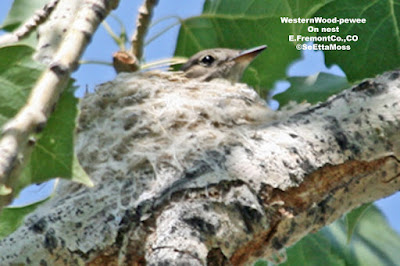Juvenile Clark's Grebes practice independence

The juvenile Clark's Grebe in the top pic doesn't appear ready to be far from it's parent though it appears too large to ride on the parent's back. I have seen some this side at least try to climb onto the parent's back but the parents seemed to discourage it by swimming away. As can be seen, the juvenile has it's bill wide open--it may be calling to the parent to feed it. The young Clark's Grebe in the bottom pic was swimming about 20 feet away from than the parent grebe that sleeping (they sleep on the water with their heads tucked in). It does appear to be an older chick (though not as old as the one in the top pic) and apparently both it and the parent considered it old enough to practice a little independence while the parent got some shut-eye. Fortunately this juvenile and it's parent were near the large vegetative mat on the lake which motor boaters and ski-doos stay away from as the vegetation clogs their blades. Note: these pics came out ...




